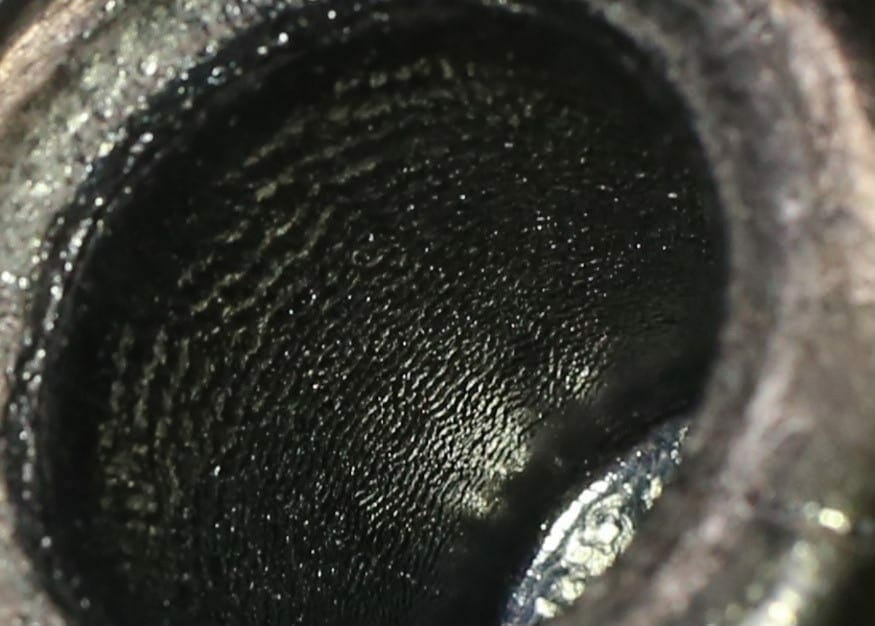LPPFusion Mechanical Engineer Rudy Fritch has continued to work with Chief Scientist Eric Lerner on simulations aimed at redesigning the anode stalk. These studies are critical to the next experiment, as the last anode cracked and the new one will be subject to greater currents produced by the new switches.
Fritsch used SolidWorks CAD program to first see how much the anode heated up from surface heating during the microseconds-long pulse of our FF-2B device. With the estimated heat fluxes that we calculated for the experiments we ran last year, the simulation calculated maximum temperatures of 500 C in a very thin layer only a few microns thick. He then fed the thermal results into a mechanical stress analysis. This showed that the heating in such a thin layer created big stresses in the beryllium anode as the layer expanded—up to 1Gpa (gigapascal) or about 140,000 psi (pounds per square inch). This is 3.5 times larger than the tensile strength of our beryllium. This implied that the Be would crack extensively well before it approached its melting point at 1300 C.
But our observation of the inner hole of the Be anode we used seemed to contradict that. (Fig 2) We saw only two big cracks and very smooth, regular waves as if the Be had melted without extensive cracking.

Fig 2. The inner hole of the anode after 200 shots. A ripple pattern implies the metal flowed like a liquid and the bright reflections indicate little or no rougness as would be created by extensive cracking.
In trying to figure this out, Lerner researched how Be properties might change as it heated up. He came across a 2015 study of how Be changes with very fast stress changes. The authors reach pressures of about 20 Gpa, some 20 times higher than those in our initial simulation, in about 100 ns by hitting the Be with an aluminum plate accelerated by high explosives. They had grooves in the Be so as to set up a Raleigh-Taylor instability that would make the grooves grow into waves. If the Be retained its strength, this would not happen. But, observed with fast X-rays, the Be behaved exactly as if it were a fluid, showing no measurable strength at all. It just flowed.
We think this is what happened with our Be—the sudden stress caused it to flow without either melting or breaking. This is good news, since it means this behavior might continue to the higher currents and stresses we expect with the new switches.
However, more simulations are needed to see how the anode vibrates after the sudden stress applied. Once we are sure what redesigns are needed to reduce stresses below the breaking point even for the higher currents we expect, we will order the anode. Unfortunately, the simulations have been taking longer and are more complex to carry out than we had hoped. Considering this delay as well as supplier delivery times and year-end holidays we don’t expect to have the re-assembly of FF-2B complete until January 2021. Of course, any delays are disappointing, but we feel that making sure of our redesigns will save time in the end.
This news piece is part of the Nov 12, 2020 report. To download the report click here.
